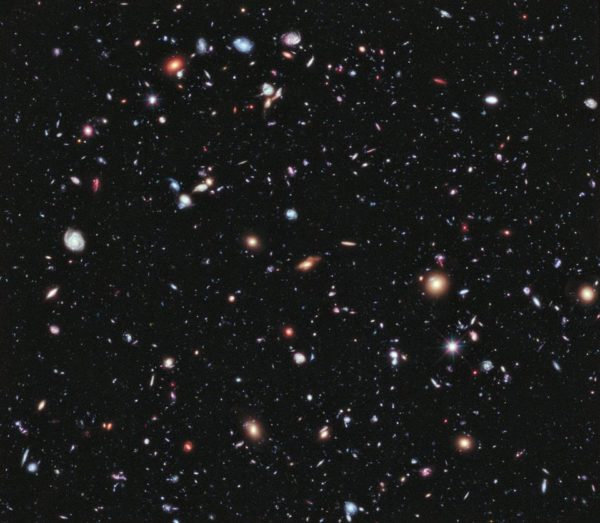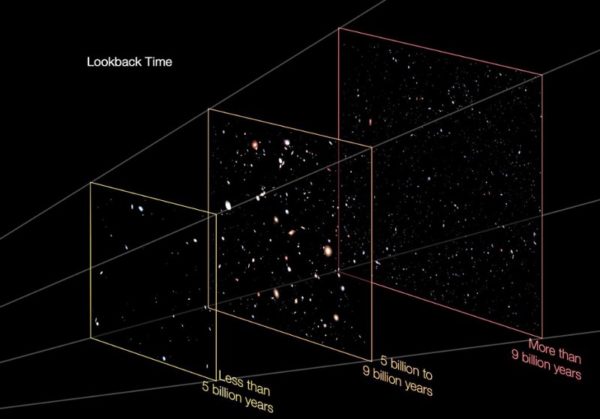“Our posturings, our imagined self-importance, the delusion that we have some privileged position in the Universe, are challenged by this point of pale light. Our planet is a lonely speck in the great enveloping cosmic dark. In our obscurity, in all this vastness, there is no hint that help will come from elsewhere to save us from ourselves.” -Carl Sagan
How many galaxies are there in the observable Universe? If you had asked this question a century ago, the answer could have been anywhere from one to infinity. If you asked fifty years ago, we’d know the number was finite, since we knew about the Big Bang, but we wouldn’t know whether it was in the millions, billions or much a greater number. And if you had asked just earlier this decade, you would have gotten an answer between 100 and 200 billion.
 The Hubble eXtreme Deep Field (XDF), which revealed approximately 50% more galaxies-per-square-degree than the previous Ultra-Deep Field. Image credit: NASA; ESA; G. Illingworth, D. Magee, and P. Oesch, University of California, Santa Cruz; R. Bouwens, Leiden University; and the HUDF09 Team.
The Hubble eXtreme Deep Field (XDF), which revealed approximately 50% more galaxies-per-square-degree than the previous Ultra-Deep Field. Image credit: NASA; ESA; G. Illingworth, D. Magee, and P. Oesch, University of California, Santa Cruz; R. Bouwens, Leiden University; and the HUDF09 Team.
By observing and counting how many galaxies there were in a given region of space, and then extrapolating over the entire sky, Hubble enabled us to make our first true estimate, although this was only a lower limit. Ultra-faint and ultra-distant galaxies are incapable of being imaged by Hubble, leading one to wonder just how many more might be out there.
- Log in to post comments


The never ending story that can never fully be explored~
@philip : we all explore the whole universe every second of our lives quantumly speaking, there's nothing left to visit.